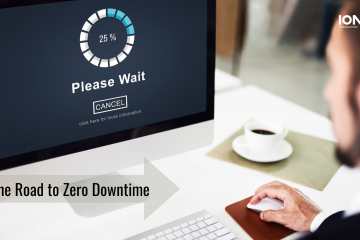Over-the-Counter (OTC) trading has been in use with traditional investors for many years now and has only recently gained prominence in the crypto investment arena. Over-the-Counter (OTC) trading has been in use with traditional investors for many years now and has only recently gained prominence in the crypto investment arena.

Since the launch of the first crypto OTC platform by Circle in 2014, the industry has witnessed a marked shift of interest from trading exchanges to OTC desks. It is difficult to quantify the extent of transition given that OTC crypto dealings happen behind closed-doors. However, Circle hints at a two to three fold higher trade volume of crypto over-the-counter transactions per day vis-a-vis that of regular crypto exchanges. For example, in 2018, Bloomberg reported daily OTC transactions to be around a staggering US$ 30 billion whereas the corresponding figures for crypto exchange trade stood at only roughly US$ 15 billion.
As Over-the-Counter trading continues to gain popularity in crypto investor circles, stakeholders are wondering what OTC trading involves, how exactly crypto OTC traders are benefitting from it, and most importantly what the possible risks are. Read ahead as we break down all that you need to know.
What is OTC trading?
An OTC market is a decentralized marketplace, where trading takes place directly between the two parties involved – in this case, the crypto traders and the market makers. It does not require the presence of any intermediary (unlike a crypto exchange). Although a few crypto Over-the-Counter brokers were in operation a few years ago, the picture is entirely different now. Not only are there numerous crypto brokers, but major exchanges have also installed their own OTC desks to make the most of the digital asset flow in the sector. Going by reports, North America and Asia record the highest OTC crypto activities worldwide.
It goes without saying that there are countless positives of crypto OTC trading that have recently brought it to the forefront, but before delving deeper, let’s highlight a few key elements of the OTC sector.
Who prefers crypto Over-the-Counter trade?
Crypto OTC desks are lucrative trading interfaces for high-volume traders, institutions, private wealth managers, and hedge funds. These buyers have huge capital bases and the capacity to trade in large volumes, often ranging from US$ 25,000 to US$ 75,000 per transaction. For OTC trade, such transaction limits are usually set by the OTC cryptocurrency broker.
Crypto miners, on the other hand, are the primary sellers in the Over-the-COunter trading domain.
Various channels of OTC crypto trade
OTC trade can presently be conducted via different channels. These include –
- An OTC cryptocurrency broker – They often act as intermediaries to connect buyers and sellers through the right platform.
- Public chat rooms – It is easy for crypto buyers and sellers to find each other through chat rooms via Telegram, Skype, LinkedIn, Internet relay Chat, broker-specific chat rooms, etc.
- ATMs – Over-the-Counter traders use crypto ATMs as well to settle one-to-one deals.
- Exchange OTC desks – Many crypto exchanges run separate OTC desks to ease out bulk transactions.
The pros and cons of cryptocurrency OTC trading
Through the crypto Over-the-Counter marketplace, professional investors can conduct bulk trades privately without price slippage. This is the primary reason why institutional investors are leaning toward OTC desks, not to mention their preference for the utmost professionalism, discretion, and best-price execution these platforms deliver. Let’s take a look at the core competencies and significant shortfalls of cryptocurrency OTC trading.
Positives
- Typically, transactions through crypto Over-the-Counter platforms provide deep liquidity, given the growing demand from institutional levels. Crypto exchanges fail to meet these liquidity requirements. This acts as an added impetus for OTC trade growth, which brings us to the next point.
- These platforms enable users to trade higher volumes of crypto assets in one go. Whereas crypto exchanges have prohibitive exchange limits for each crypto deal, there are no such ceilings posed by crypto OTC desks.
- As Over-the-Counter deals take place privately without any record-keeping, bulk transactions keep crypto market prices unaltered.
- They do not restrict investors to a particular form of currency. All OTC desks support crypto-to-crypto and crypto-to-fiat transfers, while many exchanges still do not support fiat currencies.
- They have lower hacking risks (ensures greater security through customer verification) compared to traditional exchanges.
- They involve quick responses and faster deal settlements vis-a-vis exchange-based deals.
- They support rare tokens that may not be traded through conventional crypto platforms.
- They are suitable for ICOs who are on the lookout for crypto to fiat conversion of their project earnings.
- They provide personalized services to clients which is unthought of in the case of crypto exchanges.
Drawbacks
The crypto industry however still needs to address certain challenges if they wish to get the best out of OTC trading. Here are a few of them.
- Over-the-Counter crypto deals are private. It is difficult to screen counterparties appropriately to make sure that there isn’t any illegal laundering of funds.
- As cryptocurrency OTC trading is not regulated, settlement risks are higher here than in the case of traditional exchanges. Transactions take place solely based on trust. Signed deals are mere formalities and never guarantee payment.
- The absence of or limited custody solutions brings along operational risks as well.
- Without a method of shared record keeping, data verification and tallying for future market analysis become difficult to achieve.
The relevance of Blockchain
Most of the drawbacks of Over-the-Counter trade discussed here are due to the absence of transparency and automation, which, with futuristic OTC software can easily be overcome. Automating OTC platforms with cutting-edge over the counter software would mean –
- Client authentication services through automated KYC, AML, 2FA.
- Securing private deals through digital signatures.
- Quick settlements and auto backfilling of crypto based on customer needs.
- Tracking Advanced Reports for all customers.
- A shared, transparent ledger of accounts that can be accessed by all traders and used for future reference and market analysis.
Noted crypto Over-the-Counter platforms are automating their interfaces to deliver the most trusted services to their clients. Going forward, blockchain will deliver high-performing OTC desks with institutional-grade security to further enhance Over-the-Counter crypto trading experience.
Citations:
- Circle, “ Crypto OTC Trading and Stablecoins: Why Institutional Market Participants Increasingly Choose USDC”, January 19, 2021.
- NASDAQ, “How Does OTC Crypto Trading Actually Work?”, May 17, 2021.
- Coinsbit, “White Paper, Coinsbit OTC Exchange, platform for exchange of cash.”, 2020.
- Nezamaikin, Valery N., & Zbirovskaya, Elena P., “Contemporary Challenges of OTC Trading in Digital Assets”; Atlantis Press, 2019.
- Finder, “OTC cryptocurrency trading explained”; June 3, 2019.


